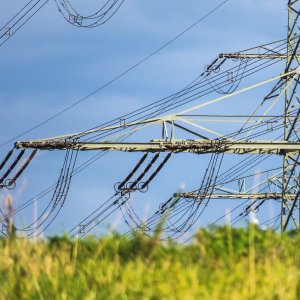Changing Minds About Nuclear Energy
STORY INLINE POST
“Laguna Verde has been operating for more than 20 years but many people do not know about it,” comments José Raúl Ortiz Magaña, president of the Mexican Nuclear Society (SNM). “There is a lot of ignorance about the nuclear sector.” SNM, as an independent organization in the Mexican nuclear sector, has more freedom to address industry issues as it is not directly linked to the Mexican government. According to Ortiz Magaña, the problems with the acceptance of the nuclear energy sector in countries like Mexico can be broken down into several stages.
First, it is necessary to convince politicians, who are the decision makers; however, this is difficult given the frequency with which they change. “The energy sector has had seven different ministers in the last 10 years,” comments Ortiz Magaña. If the nuclear sector had more time to inform decision makers about the realities of this industry, important progress could be achieved. However, working with one ministerial team for 18 months does not allow the nuclear sector to change the mindset through which it is perceived. On the other hand, CFE is more stable and the existence of Laguna Verde has allowed the utility to evaluate the nuclear sector efficiently and create longer term plans. Nevertheless, planning the future of nuclear energy requires national consensus, which poses a major challenge. The second stage consists of convincing the media. “Chile is an example that comes to mind. The country does not have nuclear power reactors but invites specialized journalists every six months to presentations by experienced nuclear energy professionals,” says Ortiz Magaña. “The idea is that if Chile decided to build a nuclear power plant, the sector would not face the same problems with the media as Mexico does, since the population has been introduced to this industry.” Finally, after the decision makers are convinced and the media is adequately using accurate information about the nuclear sector, it becomes possible to launch a public campaign to raise awareness about the risks and benefits of nuclear power.
The current importance placed on sustainability and the reduction of greenhouse gas emissions brings nuclear energy back into the spotlight because it does not emit greenhouse gases during its operations. Renewable energies also do not emit greenhouse gas emissions, though this perspective tends to exclude the manufacturing processes. For example, the production of PV cells and of nuclear fuel does generate greenhouse gases. “If we compare the emissions of the complete cycle of wind, solar, hydro and geothermal, these emissions are very similar to the ones generated by nuclear energy,” comments Ortiz Magaña. “Also, the uranium used as fuel can be bought from Australia, Canada, Russia, Kazakhstan, Nigeria, Kenya or South Africa. This diversification avoids creating a dependence on one specific country.”
According to the National Energy Strategy, nuclear energy is a clean energy and that could make an important contribution to reaching the goal of generating 35% of Mexico’s electricity from clean energy sources by 2024 and 50% by 2050. Nuclear energy reactors have a very high plant factor of between 85% and 90%, similar to the efficiency reached by coal-fired power plants and higher than the 75% efficiency reached by combined cycle plants.
“The government must include nuclear energy in its energy plans, because even given the potential of hydro, wind and geothermal, backup from nuclear is needed,” comments Ortiz Magaña. Nuclear plants are a source of base load energy for the country while most renewable energies are intermittent energy sources, with the exception of hydropower which can be administered to cover demand at peak times.
“The truth is that there is almost no competition between renewable energies and nuclear power because nuclear is a base load, while solar and wind are intermittent energy sources,” says Ortiz Magaña. “Nuclear competes with other base load energy sources such as coal and natural gas.” The success of Laguna Verde is a major argument for the expansion of nuclear capacity in Mexico. This plant started operating in 1990 with a capacity factor of 70% due to the time needed to refuel the plant, which took approximately 40 days every 12 months. Today, the availability of the plant has increased, since refueling is done every 18 months and takes only 25 days.
SENER coordinates the creation of Mexico’s nuclear strategy and supports its decisions based on CFE and ININ studies. These three entities are part of the Nuclear Committee along with the Nuclear Energy Commission. Also, as part of international agreements, CNSNS, the national regulator, and its international counterpart IAEA, are involved in administering the nuclear sector in Mexico. The challenge for nuclear energy is that, given current technology, there is a gap of seven or eight years between the decision to build a nuclear power plant and the start of operations, surpassing the six-year presidential term. Natural gas-fired power stations take less time to be built and can easily be completed during one administration. “I am happy that we have a National Energy Strategy that plans for the next 15 years; it would be ideal to plan 25 years ahead, but for that, a lot still needs to be done,” comments Ortiz Magaña.
SNM seeks to launch campaigns to change the mindset of Mexican decision makers while freely spreading information among schools and universities. Supported by specialists and experts from different institutions, SNM can provide independent counseling to the government regarding the economic, financial, regulatory and technical elements of the nuclear operating environment. “By strictly following safety and quality standards, nuclear energy can become a source of highly specialized employment and reliable electricity generation. Laguna Verde in Veracruz shows that Mexico is capable of boosting the use of nuclear power in its energy future,” concludes Ortiz Magaña.






















